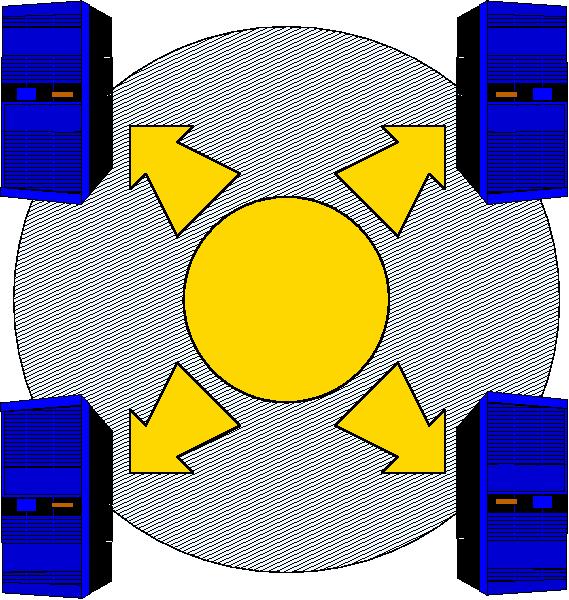Two-Way, layer-7 request distribution mechanism
We have designed and devoloped a TCP Gateway mechanisms
at the operating system kernel level, ClubWeb-2w.
It has been implemented as an extension of the
khttpd Web server accelerator,
which works at the kernel level of the Linux operating system.
The Web switch acts as an intermediary Proxy for the clients,
receiving inbound connection requests and requesting the
documents to the Web server nodes, according to a well defined
content-aware policy. The Web switch also receives all
response packets, which are forwarded to the clients.
The implementation does not suffer from overheads due to
context switches among server processes, since the functionality
is entirely implemented at the kernel level. The design of
the switch is thread-oriented, that is, a configurable number
of processing units handles the distinct stages which lead
to the fruition of the requested content.
One-Way, layer-7 request distribution mechanism
We have also developed a One-Way request distribution mechanisms,
ClubWeb-1w, following the TCP Handoff approach.
The client connects to a Web switch using plain TCP/IP and browser. The Web
switch accepts the connection request and parses the content of the subsequent
HTTP request. A Web server is chosen according to a well-defined scheduling
policy, which is usually content-aware. Next, the TCP connection established
between client and switch is transferred to the chosen server in a manner which
is totally transparent to clients. As soon as connection transfer is
performed successfully, the Web server elaborates a response and sends it
directly to the client. From now on, client packets pertaining
to the transferred connection (usually ACKs for server response segments)
are forwarded by the Web switch to the appropriate Web server.
TCP Handoff requires substantial modifications to the operating system
TCP/IP stack of switch and servers, but it allows for a much better
scalability with respect to Two-Way content-aware routing, since server
responses do not traverse the Web switch anymore.
We have designed and devoloped a small, efficient synchronization protocol
in the TCP/IP network stack of the Linux operating system. It offers the
functionalities for properly transferring a TCP connection from one
node to another.
To see a list of people involved in the HiPerWeb project,
click here.
To see a list of publications related to content-aware request
distribution mechanisms, click
here.
Overview |
Publications |
People |
Algorithms |
http://www.ce.uniroma2.it/hiperweb/prototypes.html
Last updated: December 1, 2002

